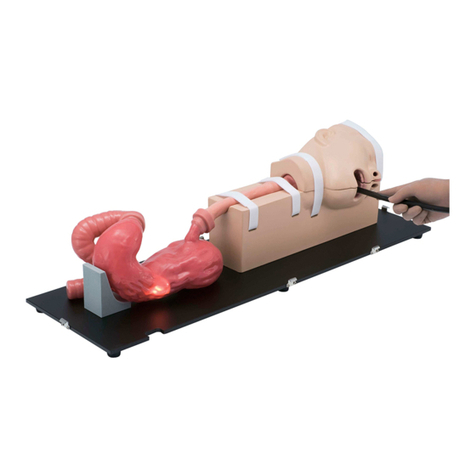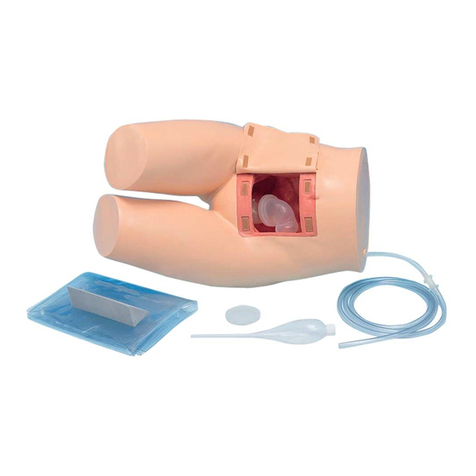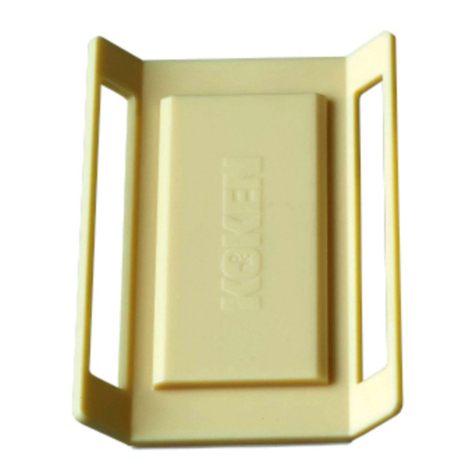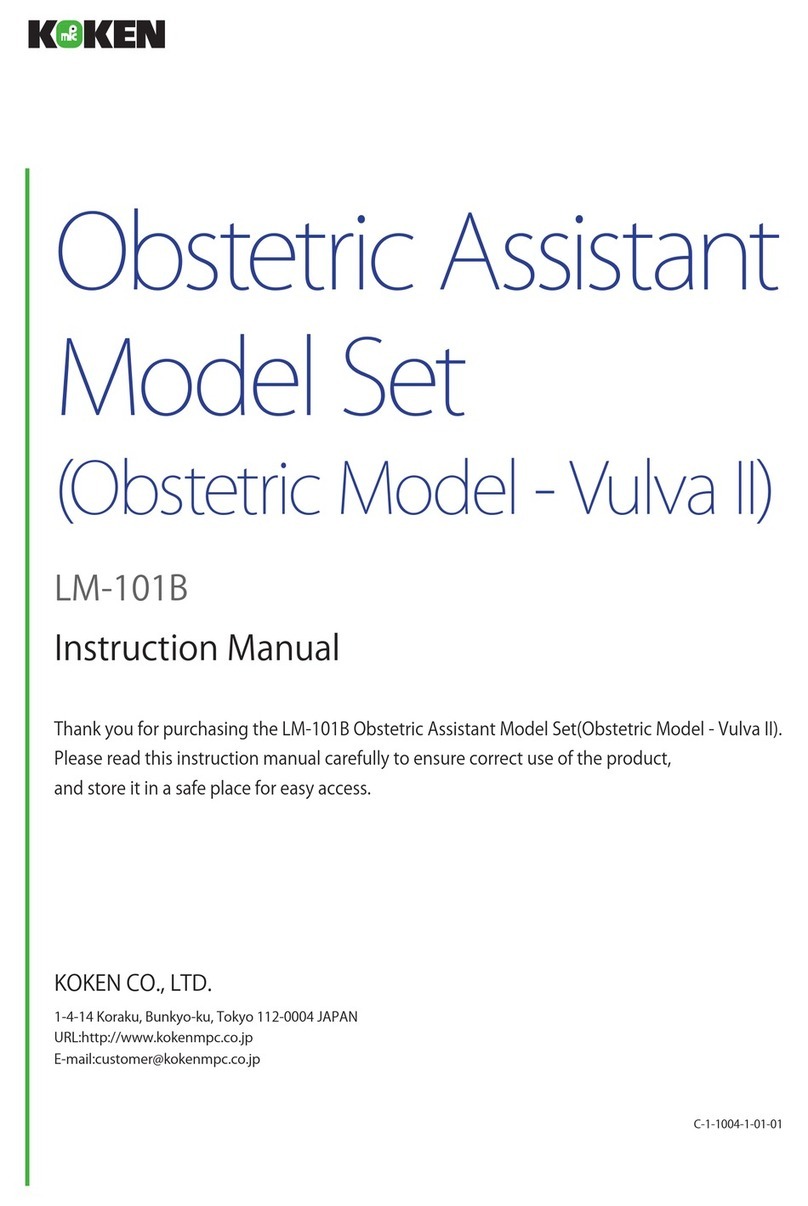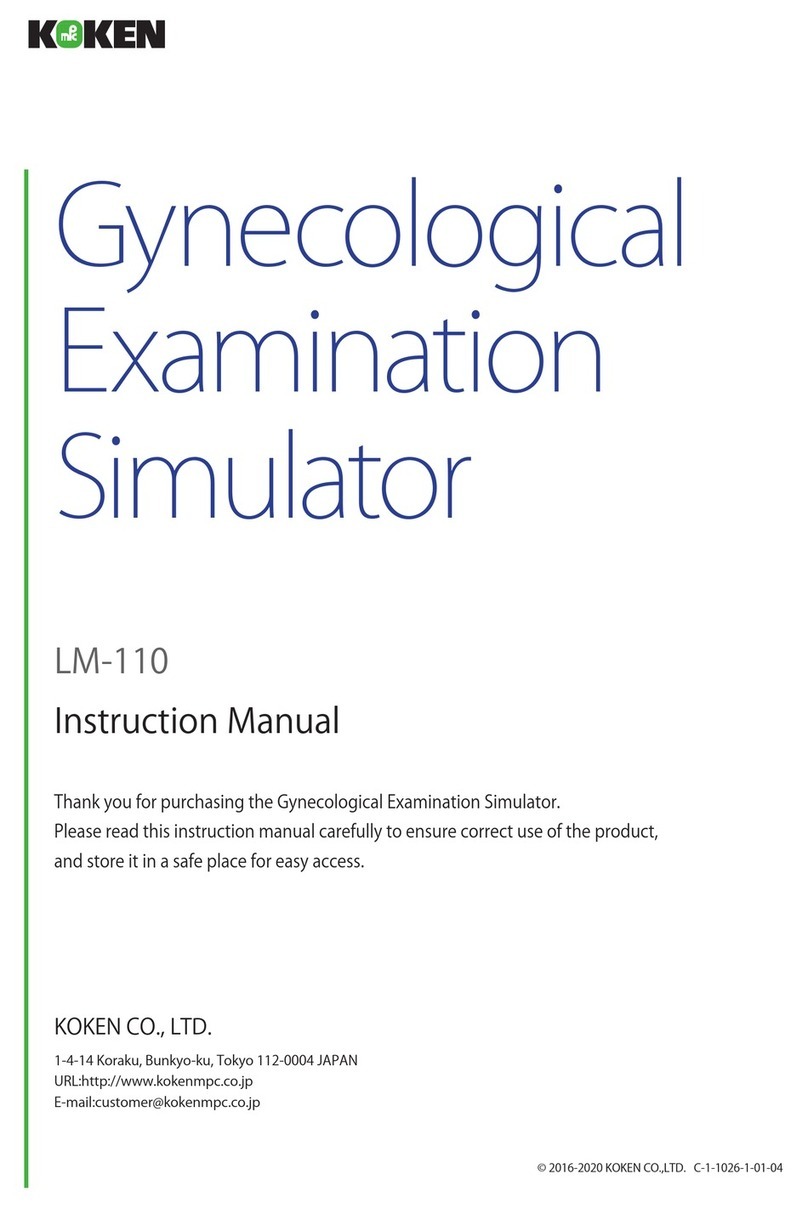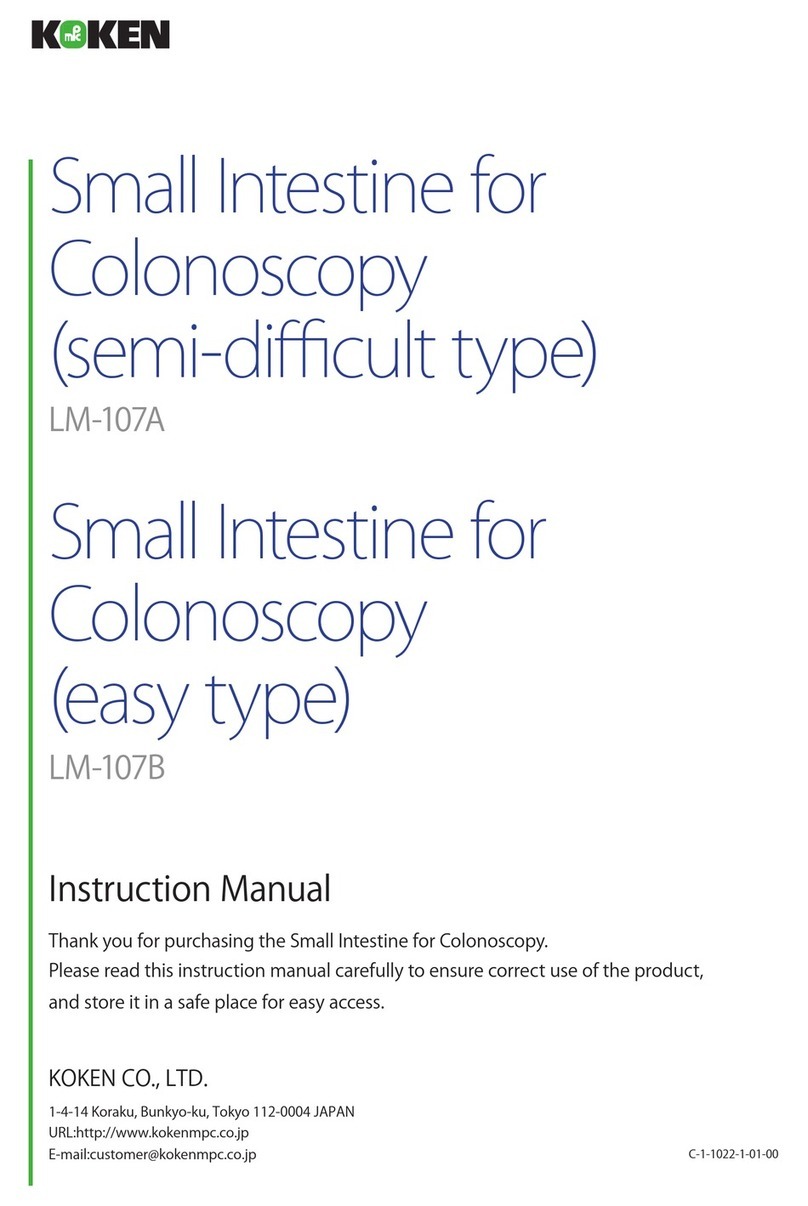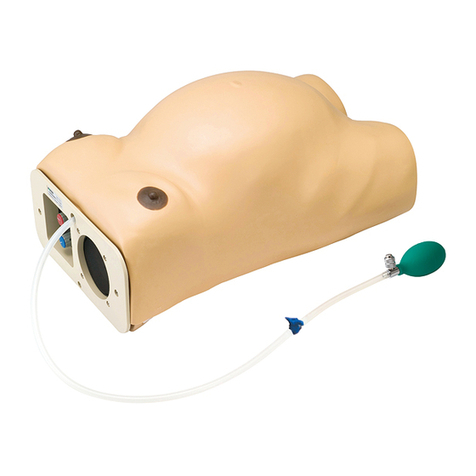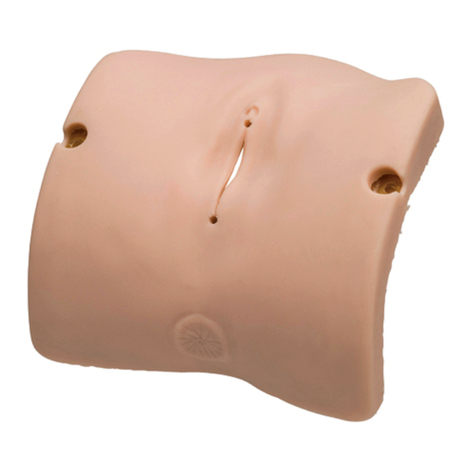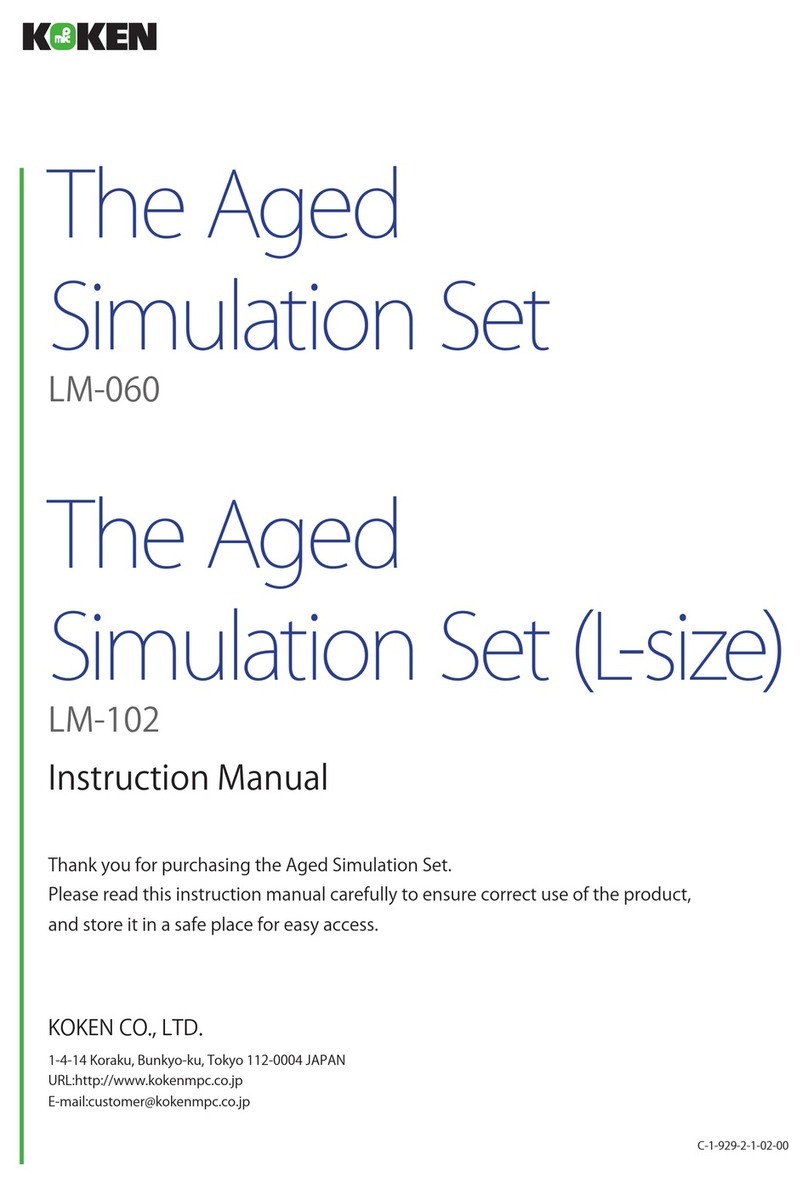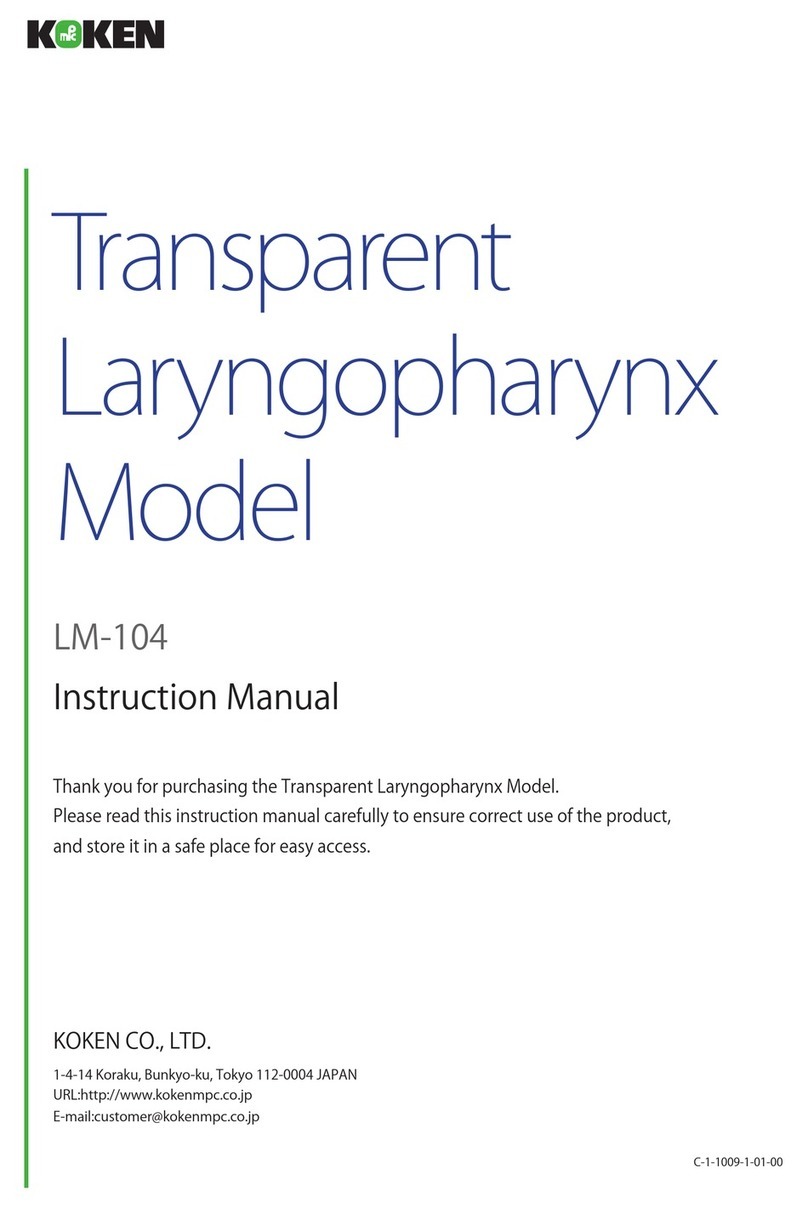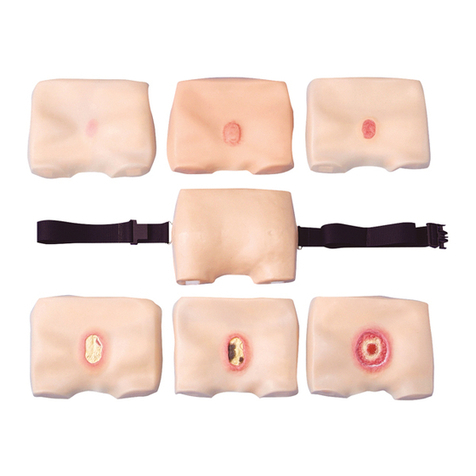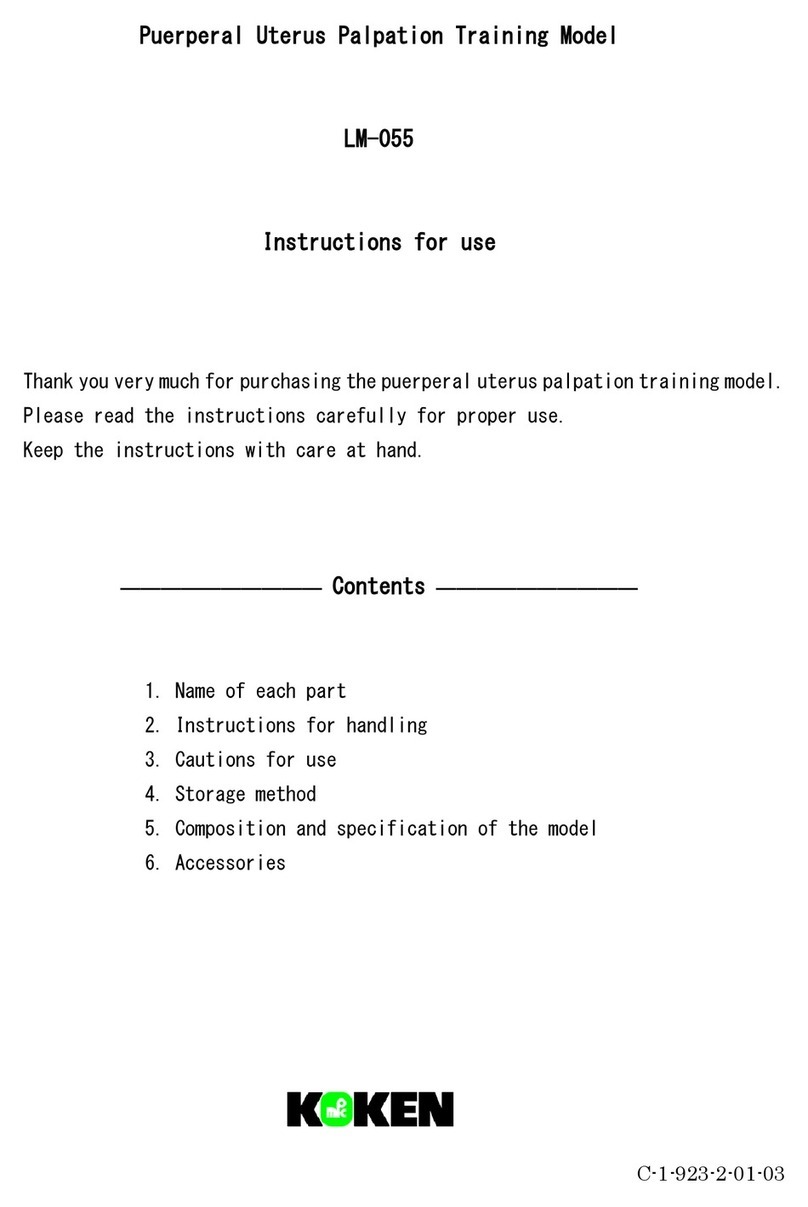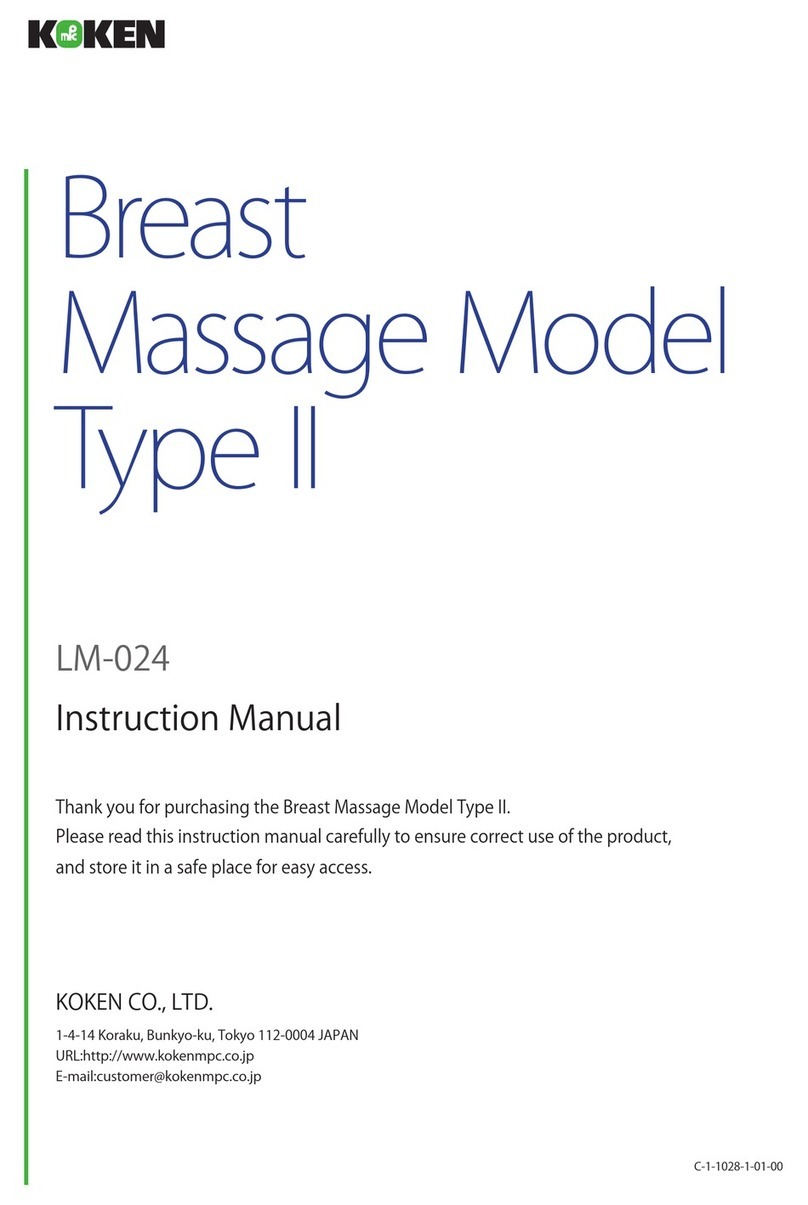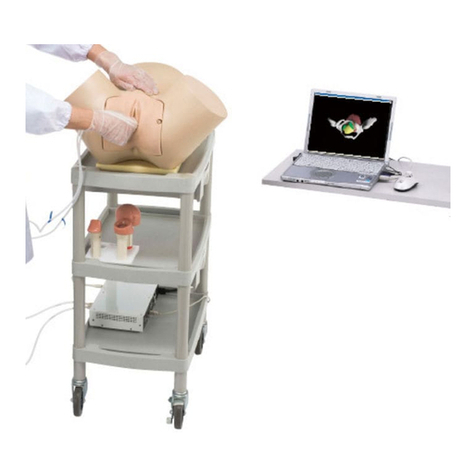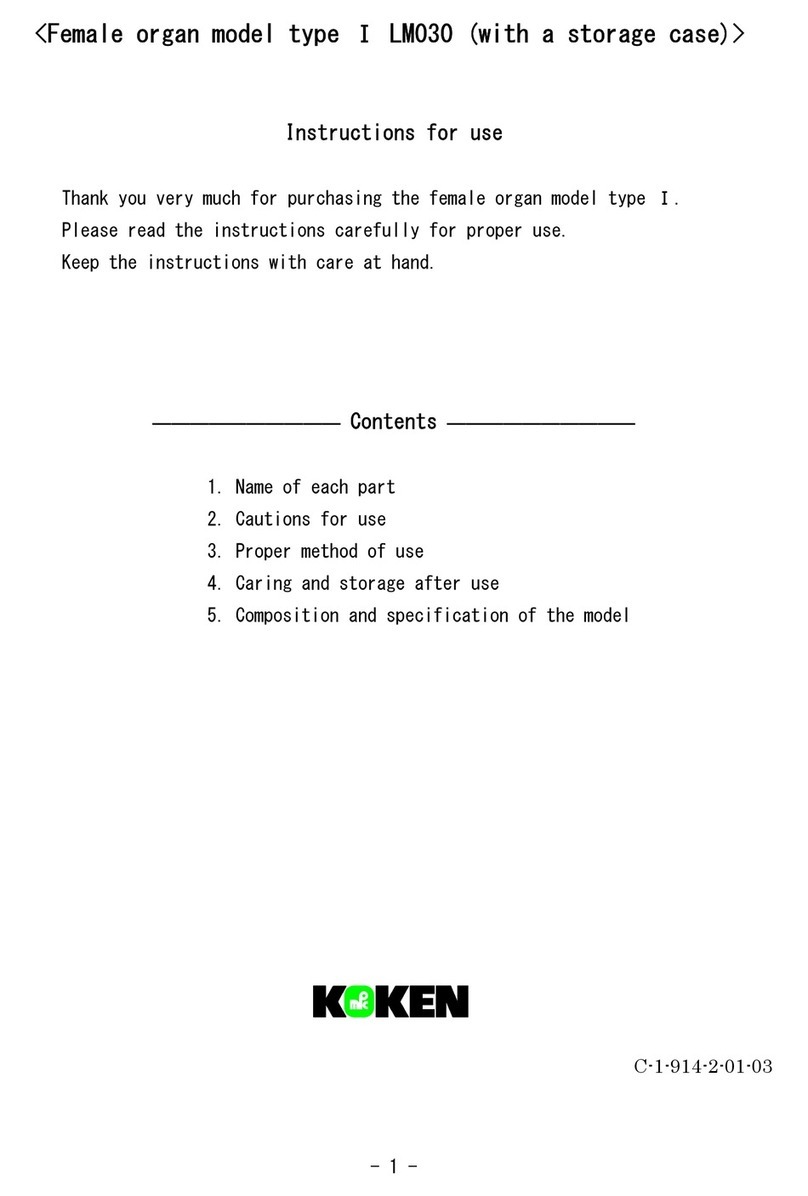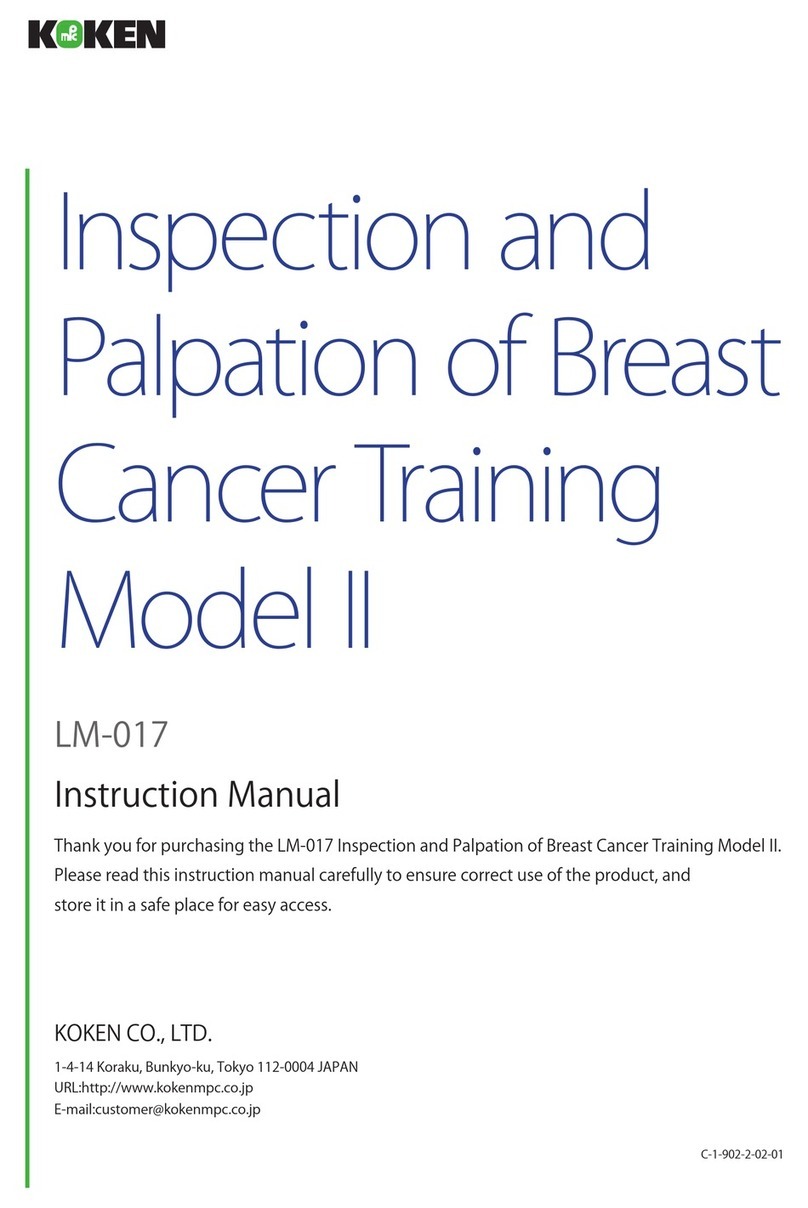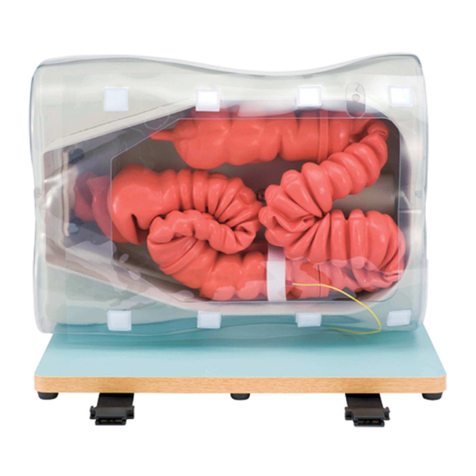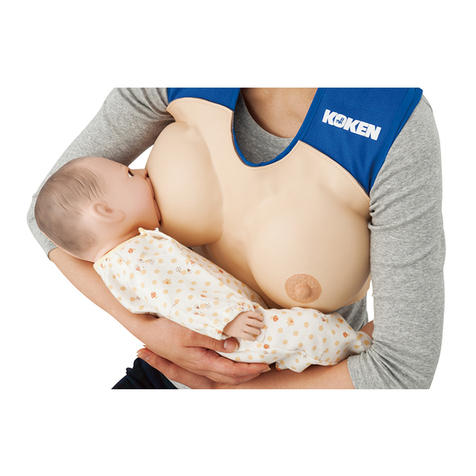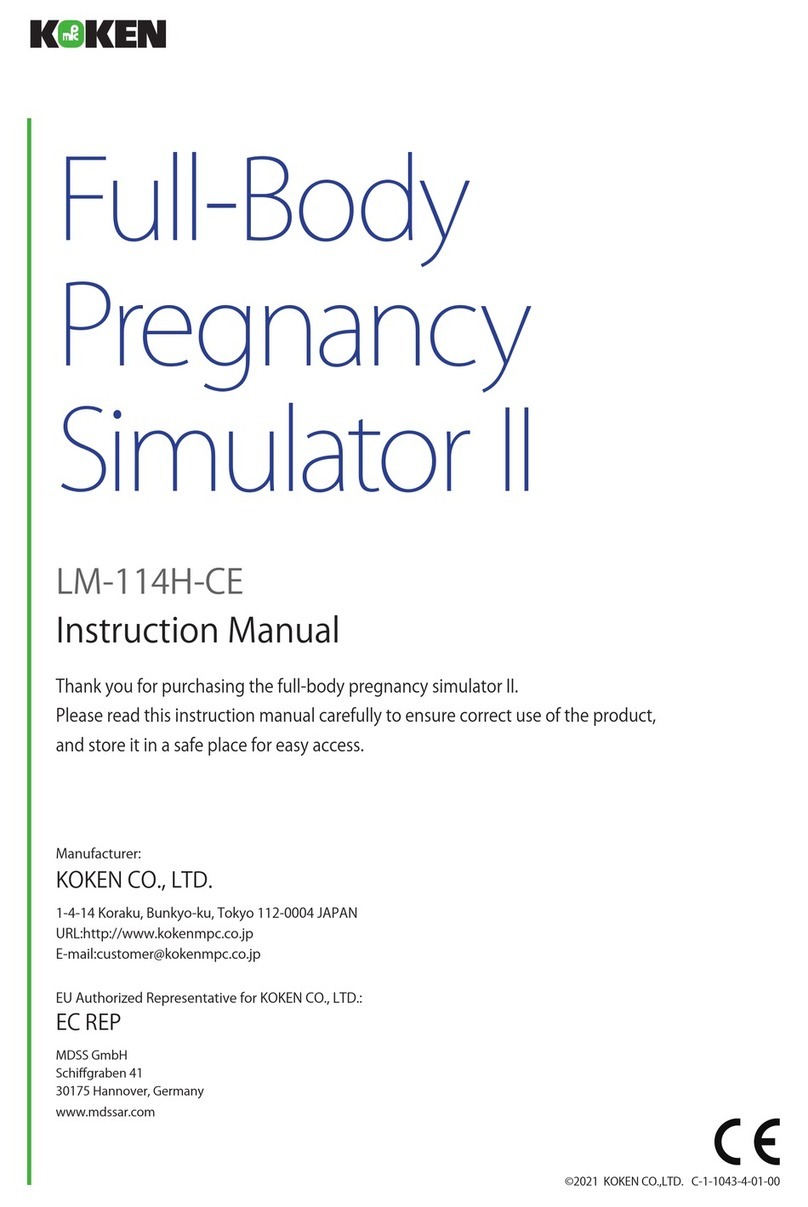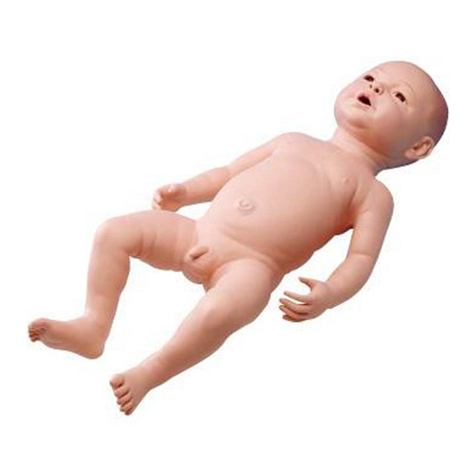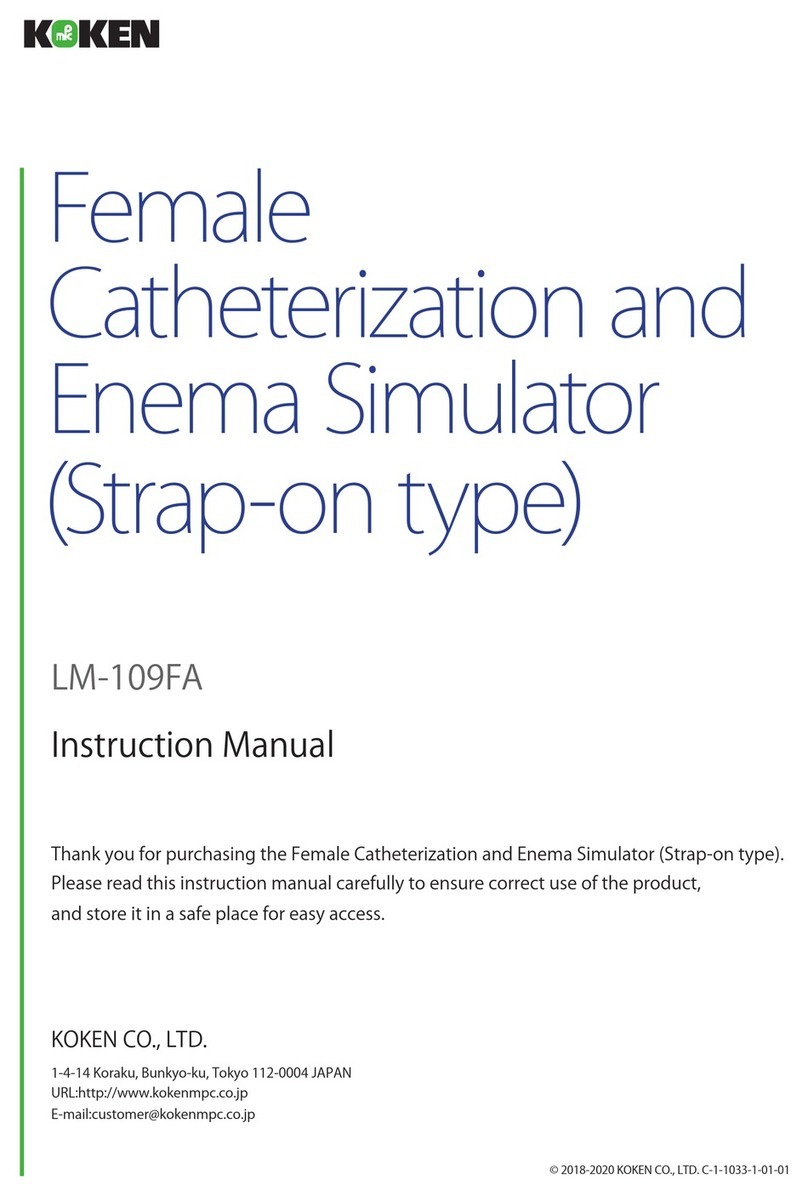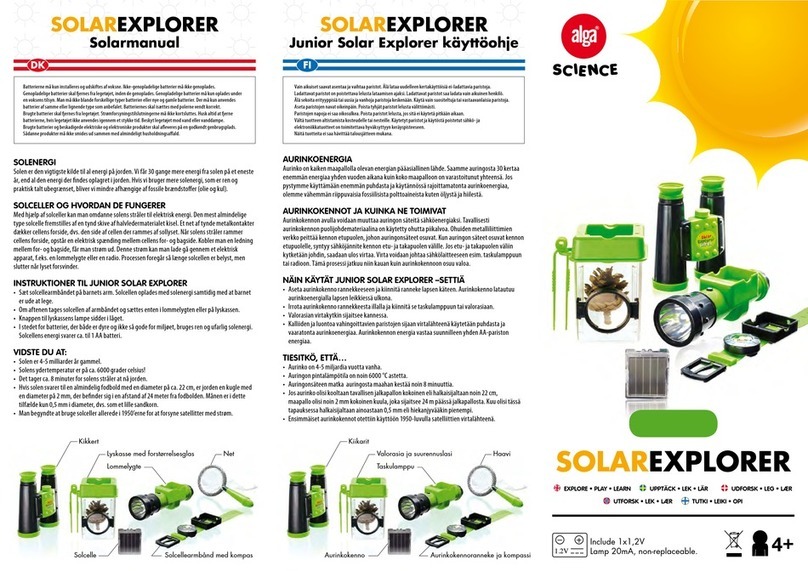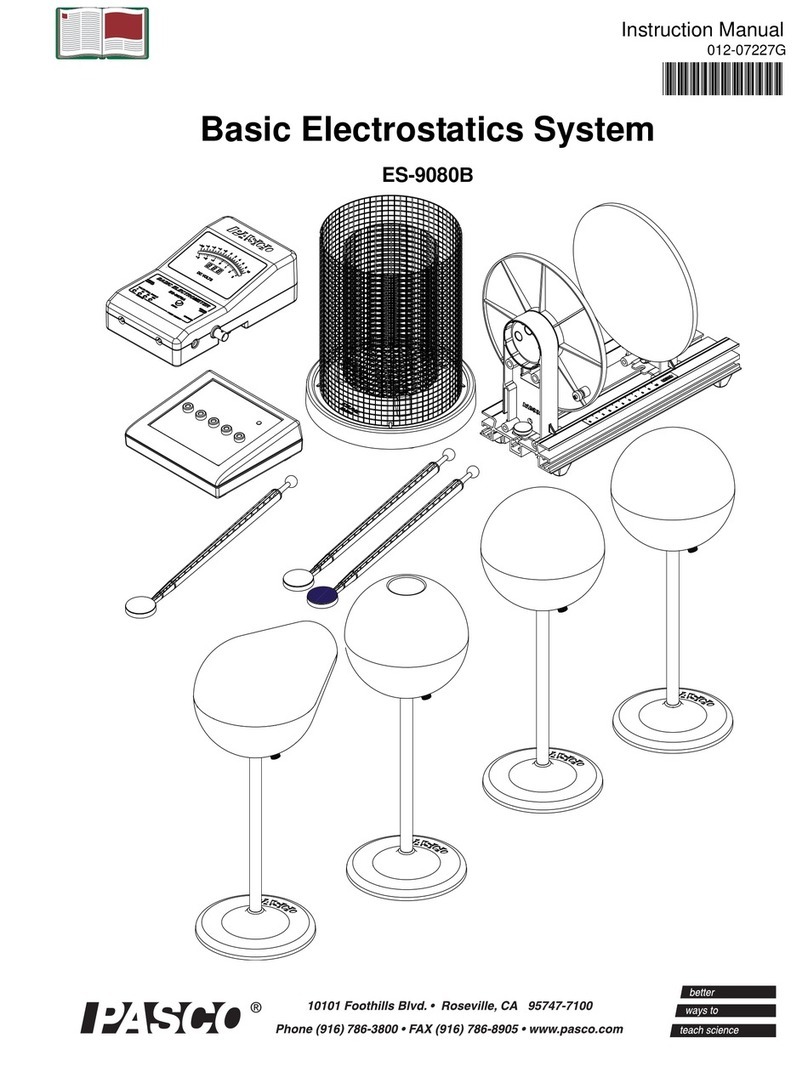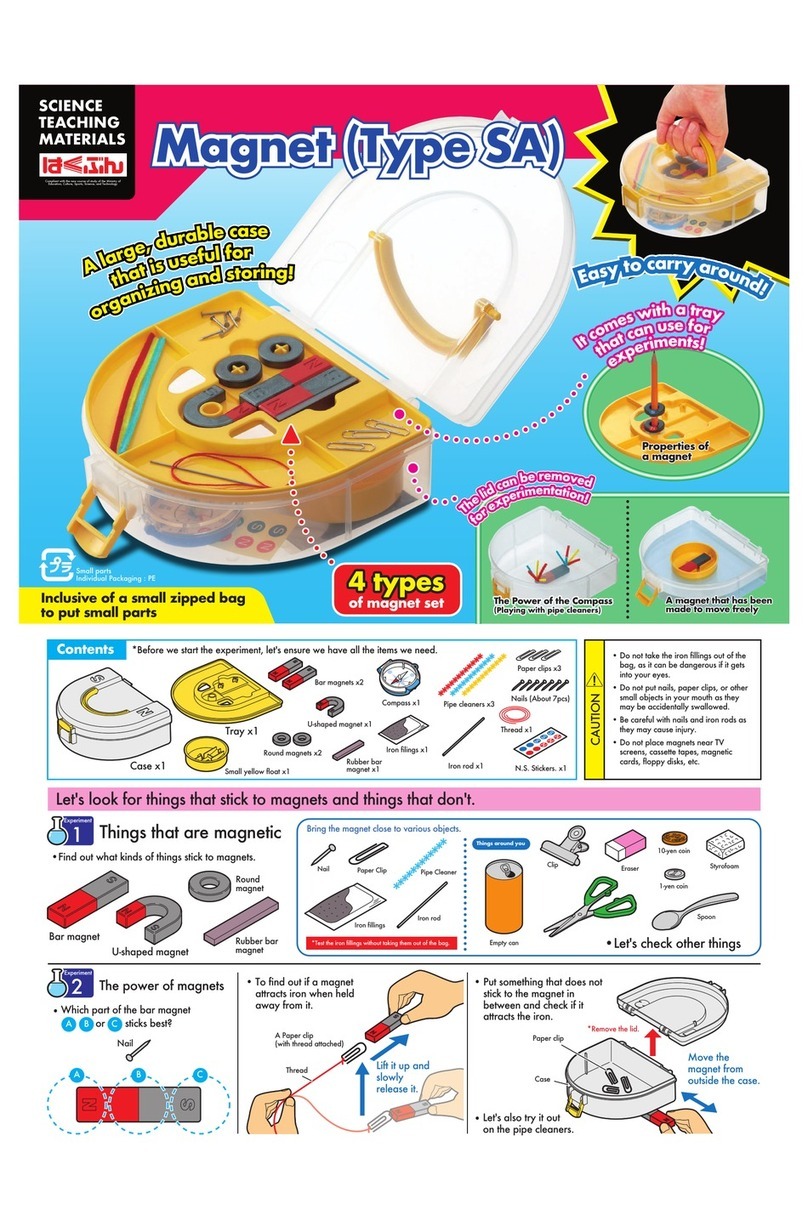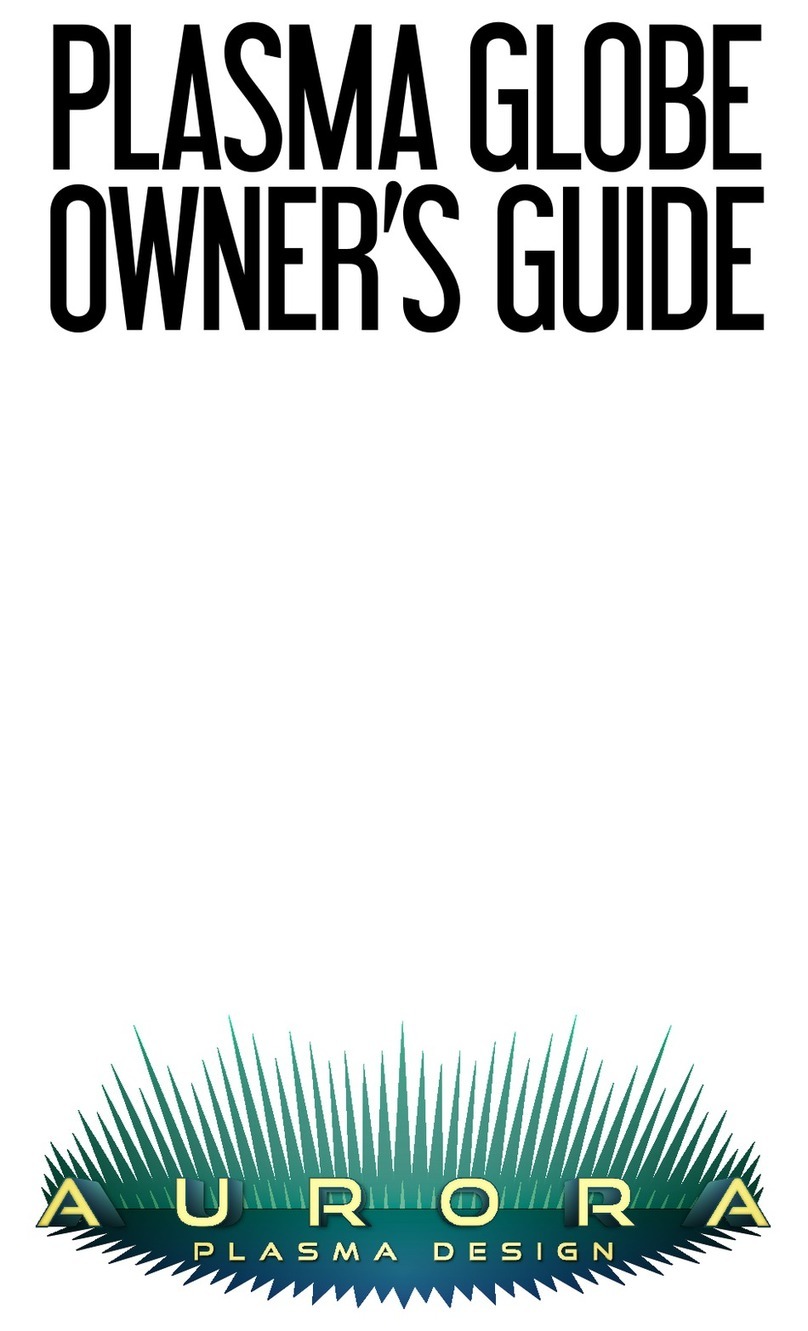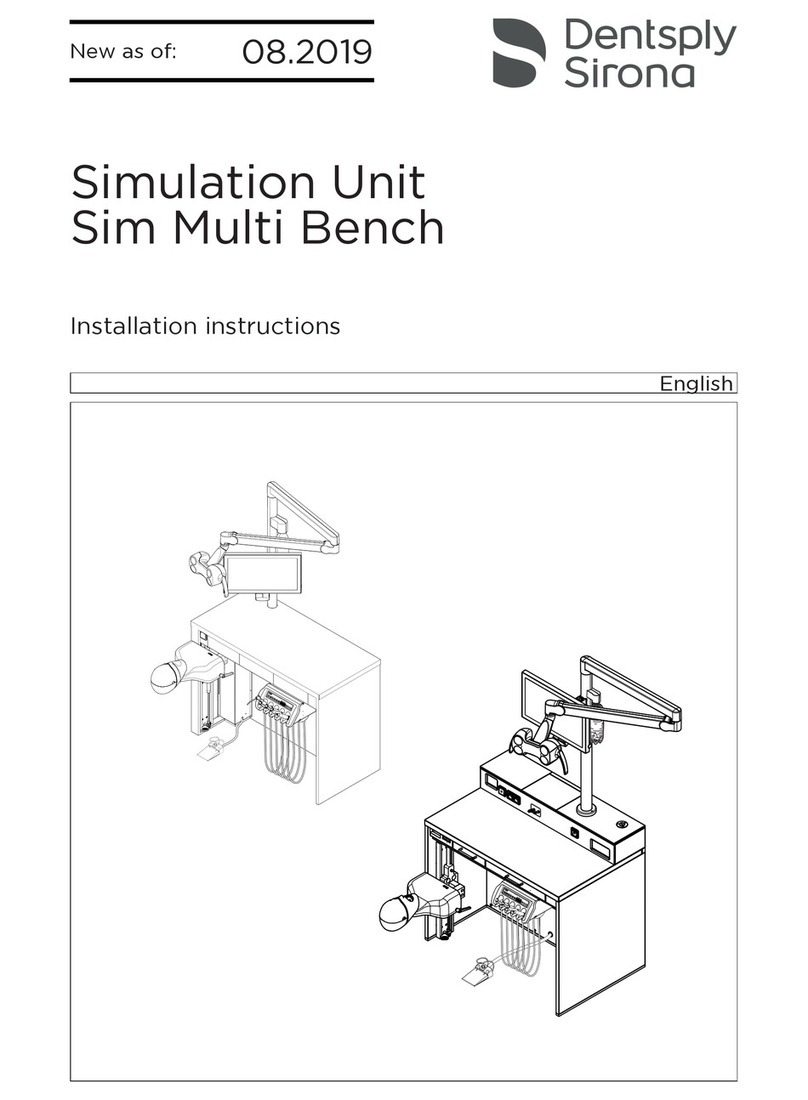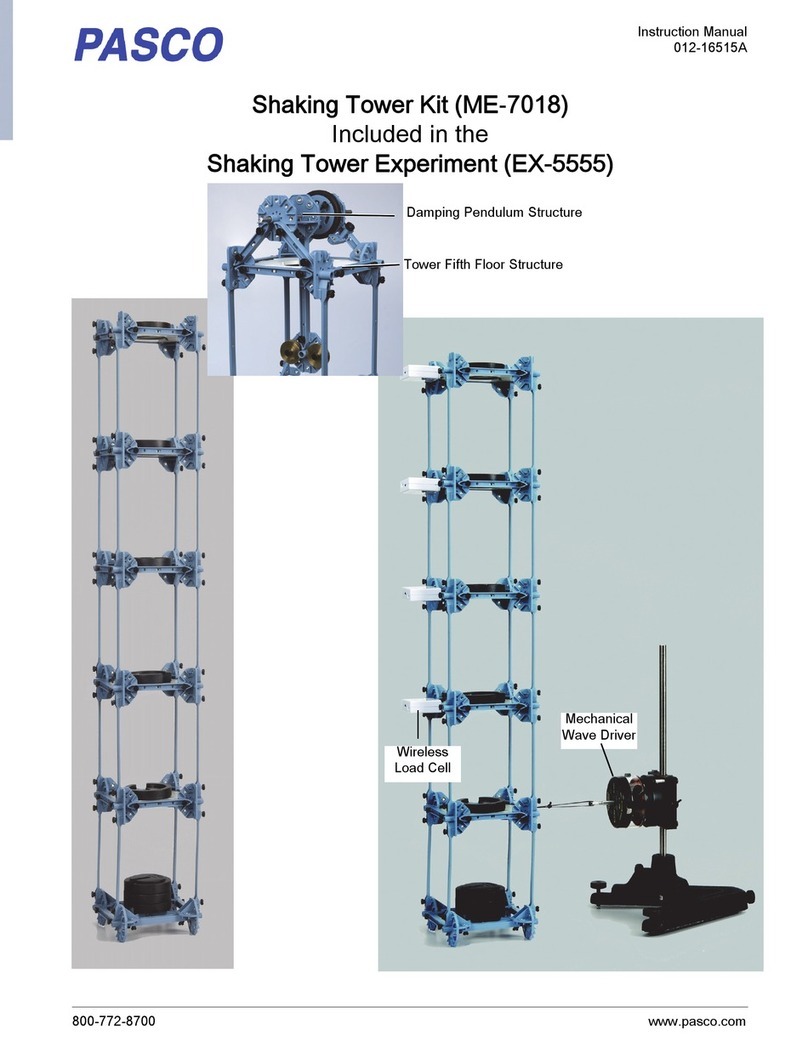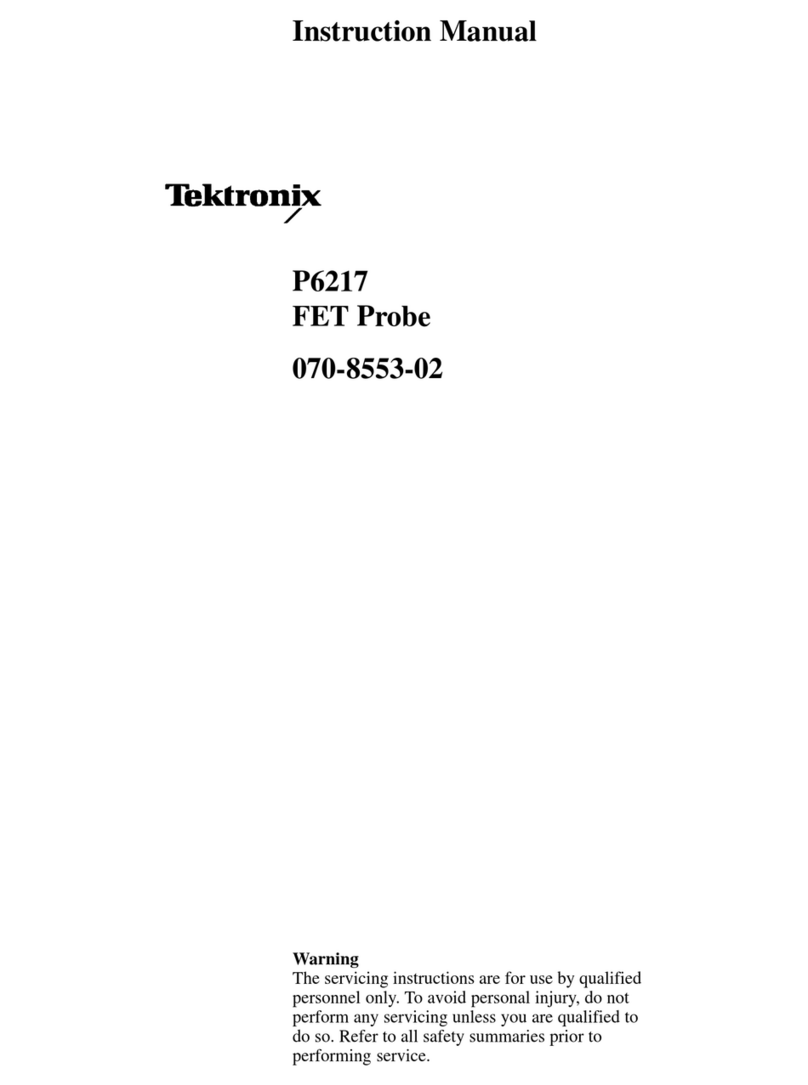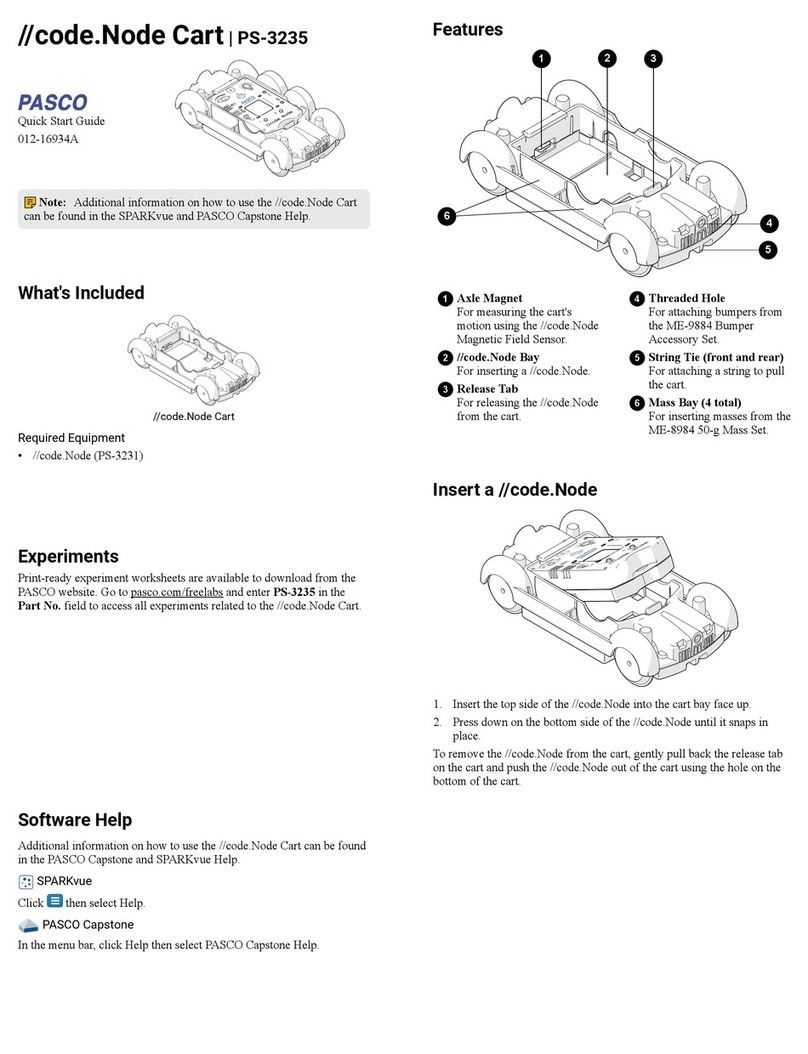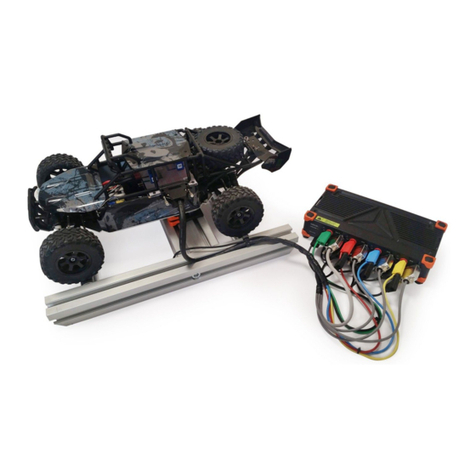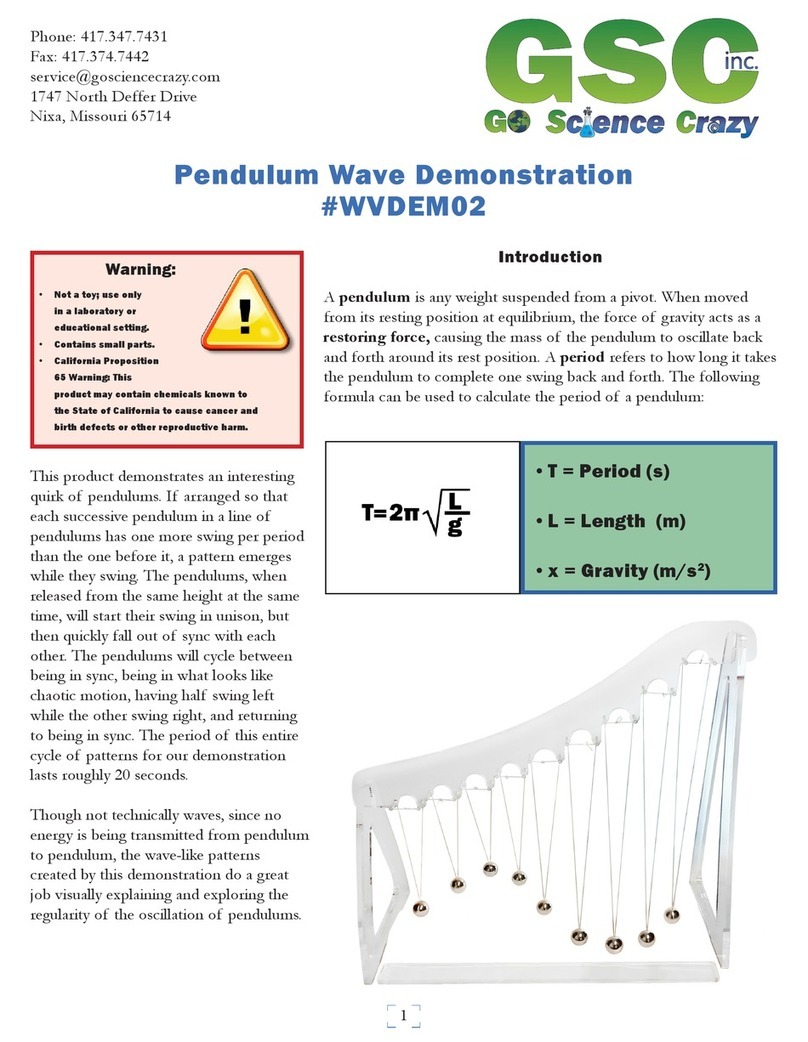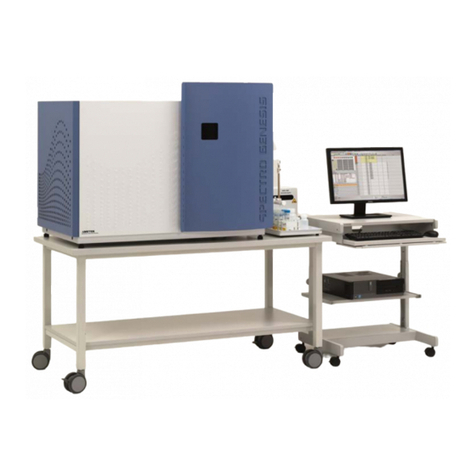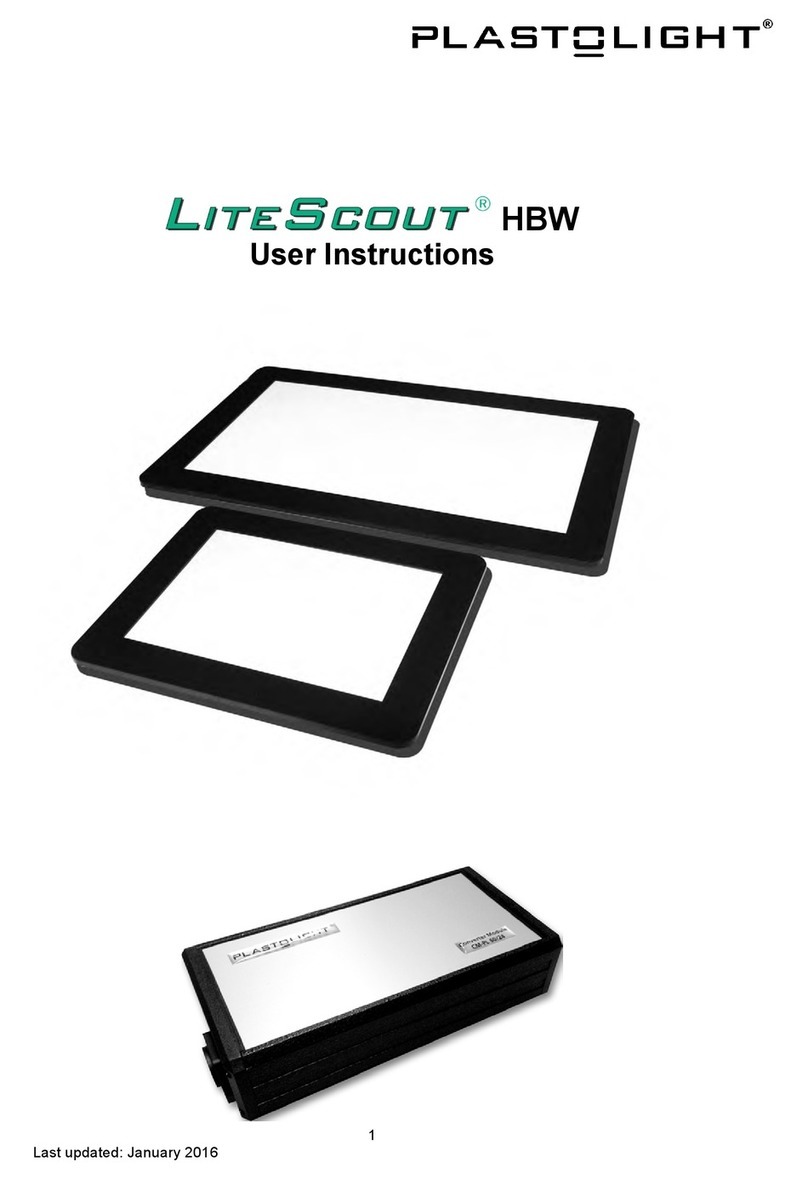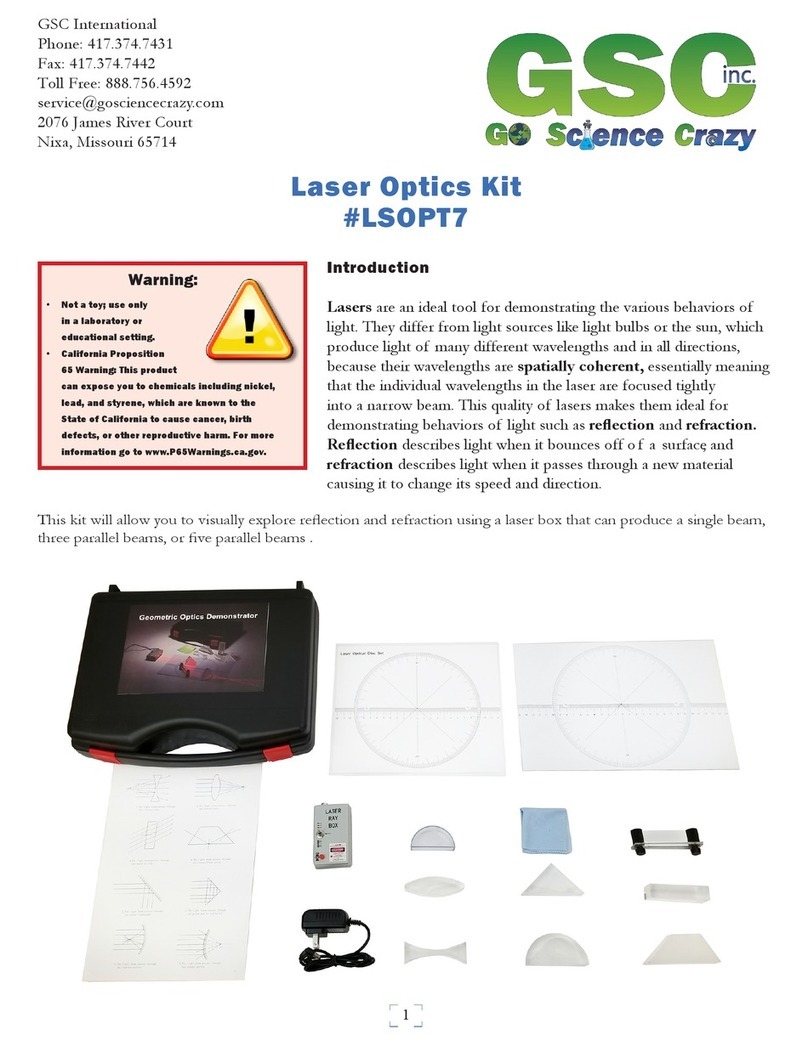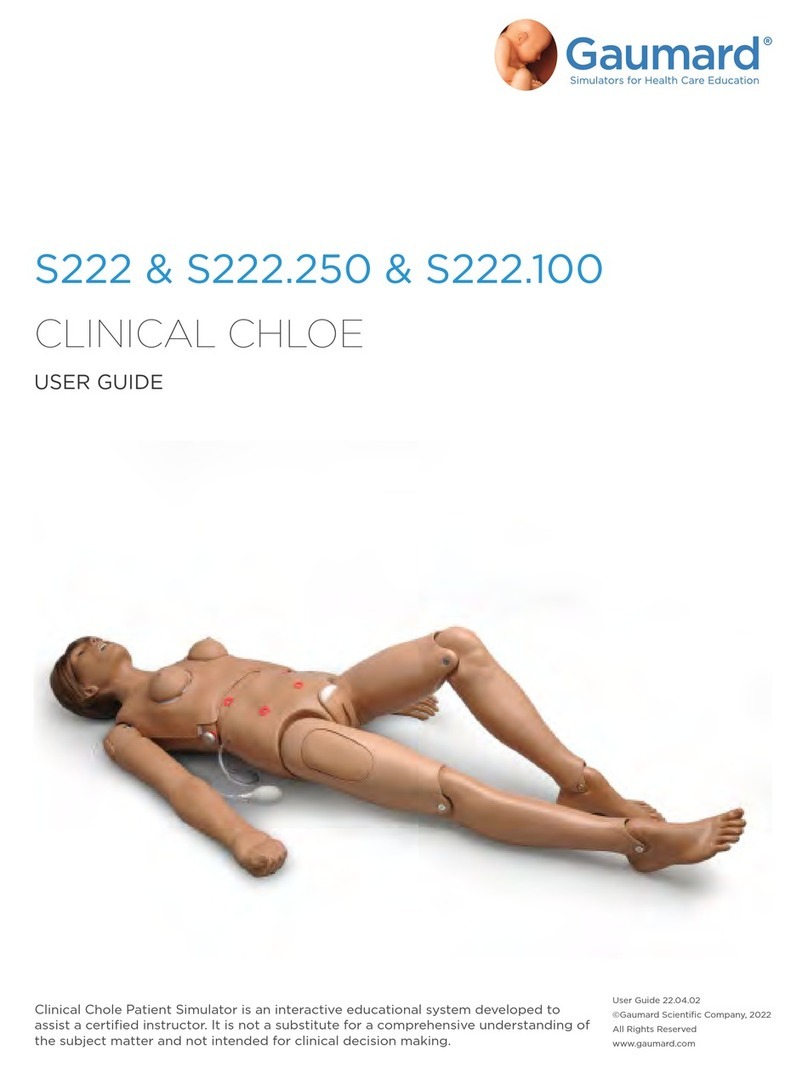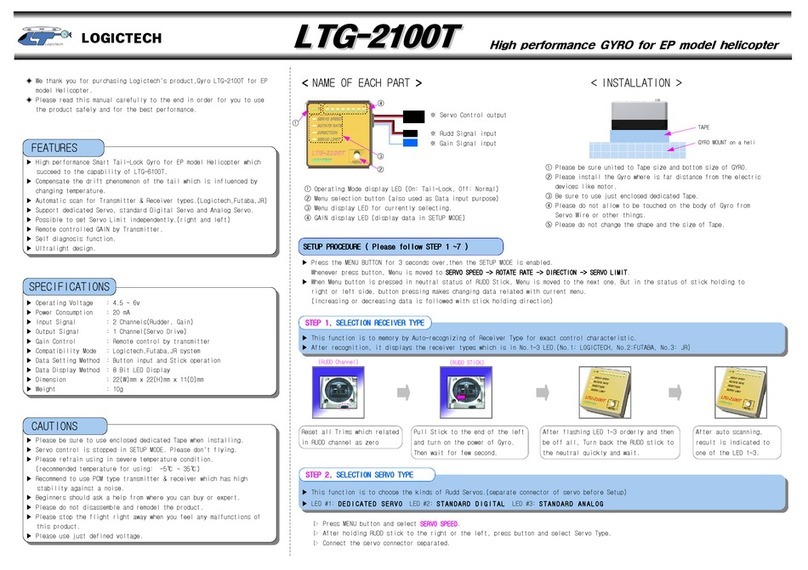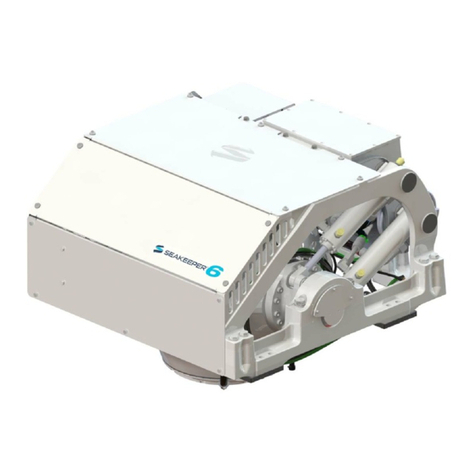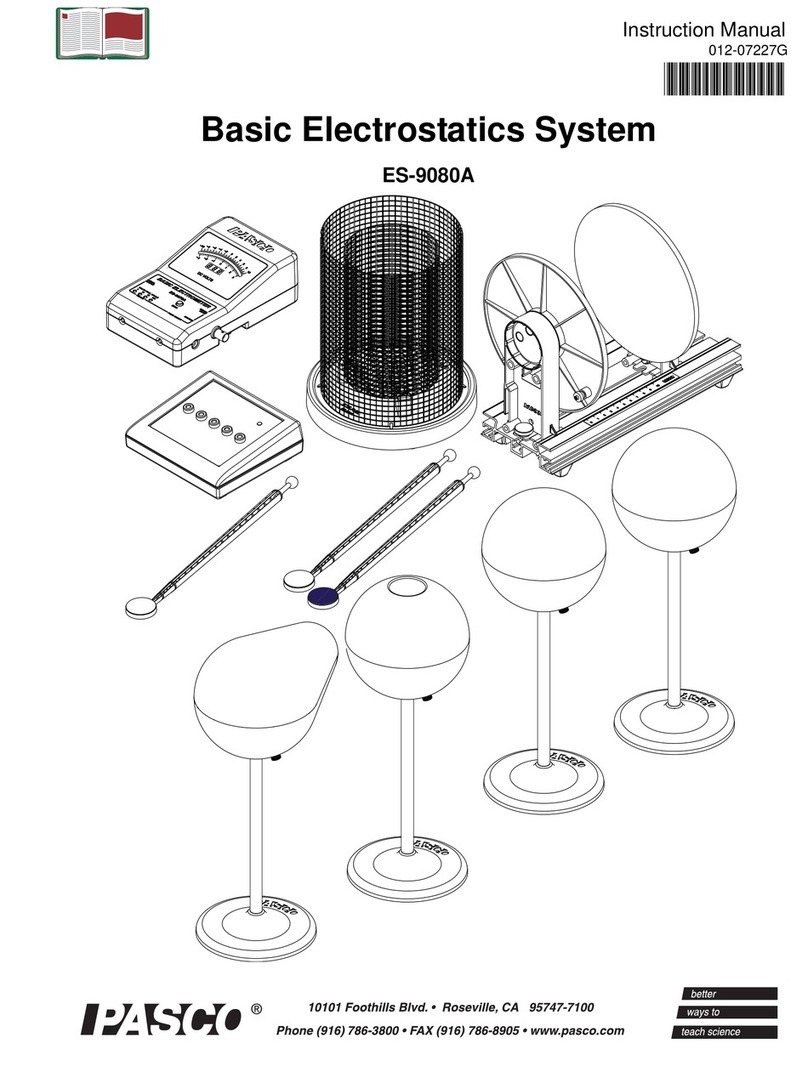
1
Handling and Safety Precautions
These precautions should be strictly observed in order to ensure safe, long-term
use of the product.
The following precautions should be observed particularly strictly:
1. The model is made to simulate the texture of human skin. Rough handling may cause damage.
2. Do not place objects on the model, as this will cause deformation.
3. To clean difficult-to-remove smudges or marks, wipe with moist gauze or similar material using a
neutral solvent diluted with water. Do not use thinners, benzene, or similar solvents.
4. Almost no uid leakage will occur when the simulated blood vessels, various injection sites, or skin are
punctured with a needle. However, sites that are punctured repeatedly will gradually begin to leak and
should be replaced with new parts as needed.
5. The IV opisthenar blood vessel tube and blood vessel tube degrade over time. Check the degree to
which they have degraded before use. If they are overly degraded, please replace them.
6. Use of thicker needles will shorten the life of the simulated blood vessels and injection sites.
7. When not in use, store the model away from direct sunlight and ultraviolet light.
1. The contents of this instruction manual are subject to change without notice.
2. This instruction manual may not be reproduced in part or in its entirety without permission.
3. Please contact the manufacturer in the event that any errors or omissions are found in the contents of
this instruction manual.
4. This product should be used only as described in this instruction manual. In particular, the product
should not be used in any way that contravenes the precautions noted in the instruction manual.
Bloodvesseltube
IVopisthenarblood
vesseltube
